PANTHERthe




MPSH was built on the land of multiple indigenous tribes, including the Seminole, Taíno, Tequesta and Miccosukee.

L South Florida families are suffering during the holidays this year, and food banks can not keep up. Since 2021, there has been a decrease of 90 million pounds of food as those in need frequently visit, supply is spread thin. This influx in demand is due to the pandemic and rising cost of resources; and in return, many have been less charitable. Thanksgiving goods have also increased prices– now Amazon and United Way are working together to deliver 1,000 meal kits to veterans and low-income families in Miami-Dade. Sedona’s and LEON also teamed up, launching a program for members to receive up to 1,200 dollars per year to use at Sedona’s grocery store.
As November marks the month of giving and gratitude, it also stands as National Senior Pet Month.


L
Skateboarding saw its entrance into the Olympics during the 2020 Tokyo Games, but viewers and skaters wonder if the Olympics creates a schism in the established culture of the sport and beloved activity.



In the lead-up to the Nov. 8 elections, abortion-related proposals were at an all-time high. Five states had midterm ballot initiatives concerning abortion and voters have led victories for reproductive rights since the recent overturning of Roe v. Wade. Michigan voters supported guaranteeing the state’s constitutional right of reproductive privacies, invalidating an old state law banning abortion except for cases of rape or incest. In Kentucky, a bill was proposed to establish a nearly complete ban on abortion, however, 52% voted against it. Abortion has been a vibrant topic in this year’s ballots, driving many to make their voices heard.
The actual gym is great, it has all the equipment needed for improvement, except for one thing; it has mirrors all over the place. Mirrors are both my biggest enemy and my biggest hero.
COVID-19 has impacted vaccine markets, as captured by the World Health Organization. Data shows that poorer countries struggle to access vaccines in high demand. While prices supposedly depend on the financial status of one’s country, middle-class countries pay as much as or more than wealthy countries. Since 2019, the worth of vaccines has tripled due to COVID-19, furthering the burdens on poorer countries. The manufacturing of half of the top used vaccines relies on two suppliers, creating shortages and regional supply instability as well. Overall, COVID-19 shows the need to recognize vaccines as vital and made cost-effective.


Upon walking into Miami Palmetto Senior High, students encounter several people who serve them from bell to bell. From the second a student steps out of their car or bus, a policeman is there to help them safely navigate the street into school. Walking through the gates, students pass MPSH’s security officers checking IDs before they head towards their classroom. Teachers and security officers are paid regularly, yet their raises are not guaranteed. Every four years, the public votes in the midterm elections to renew a referendum that gives them a raise; this year, the referendum passed in a 65 to 35 vote, but its passing leaves many questioning why the public can vote on a teachers salary to begin with.
Since 2018, Miami-Dade County has maintained its “A” school district rating as one of the highest performing urban school systems in Florida. Currently ranked as the third largest school district in the nation, MDCPS’s success is largely attributed to its teachers who educate students each day. Although MDCPS’s rating remains high, the district lies $12,397 below the national average for teacher salaries. Every four years, teachers wait in anticipation to see if the public will choose to renew their raise.
“It should not just be that you have to wait every four years to find out if the referendum [is] going to pass. Because, yeah, there is a relief that is passed, but you also have the other side of the coin that is saying that the raise should not be based on a referendum.
The district and unions should get together and find the money
somewhere in the budget,” MPSH Honors History and Economics teacher and Second Union Steward Armando Gonzalez said.
Many of MPSH’s teachers are members of the United Teachers of Dade union, which advocates on behalf of school personnel to secure state and federal funding to ensure classrooms remain a safe learning environment. As MPSH’s Designated Steward and honors and regular Chemistry teacher, Wendi Werther updated teachers about the referendum during staff meetings and UTD members when the referendum was confirmed to be on the ballot. Many feared that if the referendum had not passed, MDCPS would have seen a mass exodus of teachers either leaving or retiring due to their loss of a raise.
Some opposed the passing of the referendum because funds for teachers and school safety would come from increasing homeowners property taxes. Given Miami-Dade County’s high cost of living for a Florida county in the midst of a housing crisis, this was a deal breaker for some. Yet, since the referendum passed, homeowners will have to pay about $20 more a month in property taxes to generate $400 million over the next four years.
For teachers who live and work in Miami-Dade County, some consider themselves paying for their own raise. themselves paying for their own raise.
“Should the voters have to pay for an extra amount for schools for teachers, for security guards, when we already pay through our property taxes? Because I am a property owner as well, so I am paying for my own raise if you think about it that way as well,” Gonzalez said.
Property owners will see their taxes increase from a .75 to a 1.0 millage rate [the rate used to calculate property taxes] due to changes to a state statute that requires MDCPS to share the funds with charter schools. While the funds can now benefit teachers and security officials in charter schools, property owners now have to pay more to maintain the institutional compensation and improvements needed to reach the county’s goals. The funds will be monitored by an independent citizen oversight committee, as they have been since 2018, and revenue will be distributed proportionally to school enrollment.
“My biggest concern, however, is that some of the money (at least 25%) is going to charter schools. Those schools can use the money to help their owners, not the teachers make more money,” Werther said. “Because the state of Florida is trying to dictate teacher pay across the state, the only way to raise enough money to pay teachers has to come from the community. Let’s face it, it costs more to live in Pinecrest than to live in Panama City, but the state is funding Dade, Broward and Palm Beach the same as Alachua, Monroe and Hernando.”
Miami-Dade County Superintendent Dr. Jose Dotres advocated for and celebrated the passing of
the bill. In a MDCPS-sponsored video that MPSH’s school website broadcasts, it highlights how even if a family does not send their child to a public school or charter school, public schools remain a hub in the community, providing thousands of students through public programs and events. Additionally, teacher or not, receiving a raise allows more comfort and stability in someone’s life. This investment in the people who teach the future generation will not only help produce a more equipped workforce, but allow teachers to get more money and give it back to the economy through spending. With the passing of this referendum, 290 school officers can work to protect MDCPS’s schools against any danger and also instill a sense of safety in neighboring communities.
While many teachers and school security officers feel relieved about the renewal of this referendum, others feel tired of going through the process every four years. Some teachers seek for the district to allocate them their raise instead of the public.
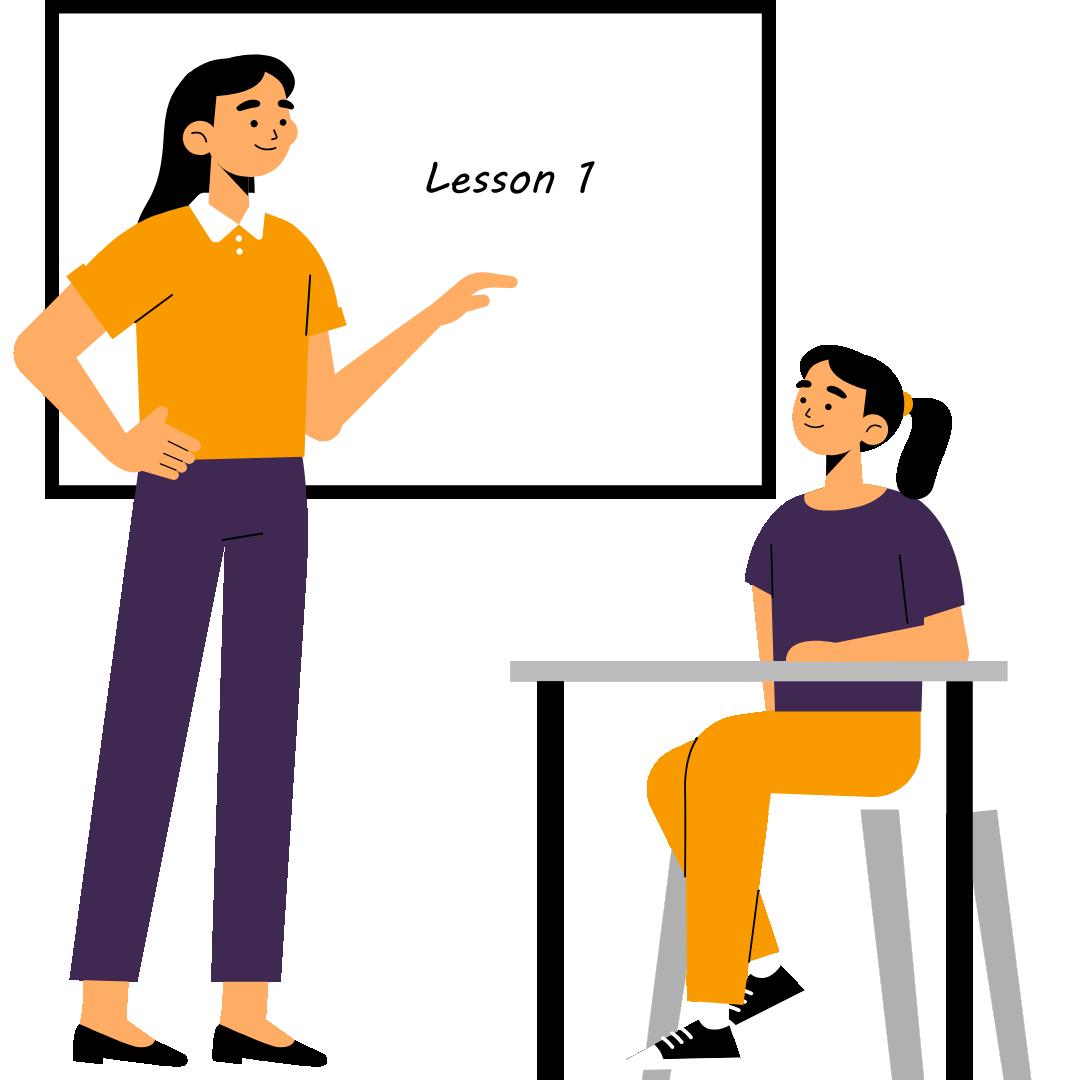
“In 2027, we’re going to have to wait and see if there’s a new referendum or not. Hopefully in the next four years, we can correct this problem because we have four years to correct it,” Gonzalez said.
s.elkins.thepanther@gmail.com
The property of Miami Palmetto Senior High has not always been a place full of students. The grounds walked on each day by its current high schoolers are the old stomping grounds of Native Americans. MPSH was built on the land of multiple indigenous tribes, including the Seminole, Taíno, Tequesta and Miccosukee.


The idea behind land acknowledgment is to recognize indigenous people as the original owners of their land and to respect their ongoing relationship with the land.
“I think [land acknowledgments] is a start. I would not say it is reparations. I just think it is acknowledgment and from that point, you can build on that,” MPSH AP Human Geography teacher Maribel Pizarro said.
The tribe many are most familiar with, the Seminoles, continue to settle in Florida while maintaining six reservations in the state.
In 1817, the Seminoles began a series of three wars against the United States, and by 1858 there were only 200–300 Seminoles remaining in Florida. It took until the late 19th century for the Seminole tribe to venture back into trade. In 1957, the federally recognized Seminole Tribe was born with the creation of a constitution.
The Indian Claims Commission attempted to make reparations with the Seminoles over their confiscated land by providing them with $12,347,500 in 1970.
The Taíno were the indigenous people of both the Caribbean and Florida. Beginning in 1493, the Taíno were conquered by the Spaniards, whom are believed to be among the first tribe Christopher Columbus encountered.
“At the very beginning, [Europeans] did try to utilize [Native Americans], as most people do in foreign lands, as guides, and essentially assist them with acclimating to the new land,” Pizarro
said. “But of course, in most ethnocentric ideologies, they immediately assumed that they were better than them and that creates conflict.”
By 1550, the tribe neared extinction and Taíno culture was largely wiped out.The Taíno reserve the right to self-determination, though it is not officially recognized by the government.
The Tequesta, a small, peaceful tribe, were one of the first tribes to exist in South Florida. When the Europeans began arriving in Florida, they faced disdain from the tribe, but the Europeans eventually won their friendship through gift-giving.
By the 1800s, the Tequesta tribe only had a few survivors as a result of slavery, land disagreements and disease.
The Miccosukee tribe fought alongside the Seminoles in the Seminole Wars of the 1800s against the U.S.. Those who were not forced to move to Oklahoma during the war found refuge in the Everglades. In 1962, the Miccosukee were recognized as an official tribe by the U.S. government.
Today, the Miccosukee tribe consists of about 550 members in South Florida, with a total of three reservation areas throughout the state.
Buried beneath the hallways walked on by thousands of students, a rich indigenous history lies. Next time one walks into school, acknowledge and remember the ancestors who founded this land and their ongoing relationship with it.
Brooke Wilensky Copy Editor b.wilensky.thepanther@gmail.com DESIGN BY JASMINE JUDGE PHOTO BY MADDIE VOLPE











As November marks the month of giving and gratitude, it also stands as National Senior Pet Month. National Senior Pet Month originally began when the American Society for the Prevention of Cruelty to Animals,ASPCA, and petfinder. com founded the national holiday to improve the perception of senior pets as quality animals for adoption. The month also aims to spread the awareness that senior pets at times may be more adoptable than younger pets and increase the consideration of adopting an older pet.
“Pretty much it is a second chance for them. So adopting them is just giving them that second chance, that kind of the last thing that they will remember. As well as the many pros in adopting senior pets, they are gonna be a lot calmer than your average puppy, and that is the first thing that I always tell people to remember,” Manager for Miami Animal Rescue Samantha Odieres said.
The demographic of most shelters follows the pattern of senior pets taking up the majority occupation of shelters while being the friendly, perfect companions in search of a home. According to the ASPCA, senior dogs, for example, have a 25% adoption rate, compared to the 60% adoption rate of younger dogs and puppies. Unlike younger pets, older animals typically have some basic training and are likely to settle into a home more easily and quickly. Older dogs have often grown out of habits that a puppy has not, including teething, destructive behavior and accidents in the house. Additionally, a senior pet usually has a calmer and more friendly disposition than younger animals would, according to the ASPCA.

















Miami Palmetto Senior High School’s own Animal Welfare Club, PAWS works towards the cause and during the month of giving has put forth the maximum effort to give back to those furry friends and the community.











“This year, we are currently doing a Thanksgiving drive where we are collecting items for the shelter Paws4you–for both older and younger dogs. We painted palm fronds and coconuts and had volunteers go to decorate Pinecrest Gardens for the Howloween event for Paws4you, which senior dogs attended as well as working with the organization, Heel 2 Heal, where we brought senior therapy dogs to school to interact with the kids,” MPSHJunior and PAWS Historian Gianna Graziano said.
Isabella Hewitt Contents Editor i.hewitt.thepanther@gmail.com DESIGN BY IVY LAGARTO PHOTO BY RYAN MCKEAN Euthanization in pounds and shelters IS one of theKnaus Berry Farm: famous for their strawberry fields and freshly baked goods. This South Florida family-owned staple has just reopened for the season, and longtime fans are already lining up.





“I have been going to Knausberry since I was two and go there three times a year. My mom just went and it was really busy, the lines to get food were 30 minutes long,” Miami Palmetto Senior High sophomore Anna Fuentes said.

The farm’s history began in 1956 when two brothers, Ray and Russell, began to grow strawberries; the farm gradually grew and became known as Knaus Berry Farms.
Over the past few years, the farm has become increasingly popular as many enjoy their cinnamon rolls or the atmosphere for taking live photos. Thomas Blocher, Co-owner and Bakery Manager of Knaus Berry Farm, is amazed by the turnout at the farm, even with the lack of advertising through social media.
“We have never advertised. When social media became more popular, we were on there but all of our followers on Facebook and Instagram are organic. It is basically word of mouth and I guess our goal was always just to put out a quality product,” Blocher said.

The farm operates from November through mid-April and closes during the summer due to the strawberry growing season. However, the farm does not take a break during the offseason, when they begin planning for the grand opening as early as September.

“As far as getting ready, September is jelly month; we make jelly and we sell at the stand, and then October is basically just getting everything put back together, making sure all the machines are running and getting all the supplies in. And then we open the doors,” Blocher said.
At the farm’s bakery, the cinnamon rolls are a customer favorite; strawberries are popular at the produce stand, and the
strawberry shake is popular at the shake stand.
“The people there are really nice, and I enjoy the food there and what they have to offer. I usually just get baked goods and milkshakes. I also love the cinnamon rolls, they are really good. They also offer strawberry picking which I recommend because it is a good experience,” Fuentes said.
While the anticipation builds up, the farm gets the busiest at the beginning of its opening season.
“We get a lot of people now because they have been waiting for us to open up. They are anxious for us to open up, and they come so you see the longer lines now. And then, when we get closer to Thanksgiving, you are going to see long lines. And the same thing for Christmas and between Christmas and New Year. There are a lot of out-of-town families visiting, and it seems like it is a destination to come to the farm,” Blocher said.
The day-to-day life on the farm for employees varies based on one’s department.
“Each one of us has our own little department. I manage the bakery, so I start my day with reviewing what we sold from the previous day, maybe even the previous year. Then I will work out a schedule of items that I want to produce and how many of them I want to produce. The other departments basically do the same. They got to put the machines together and make sure everything’s ready,” Blocher said.
Knaus Berry Farm remains a beloved place for South Floridians to enjoy the fresh atmosphere and overall have a good time.
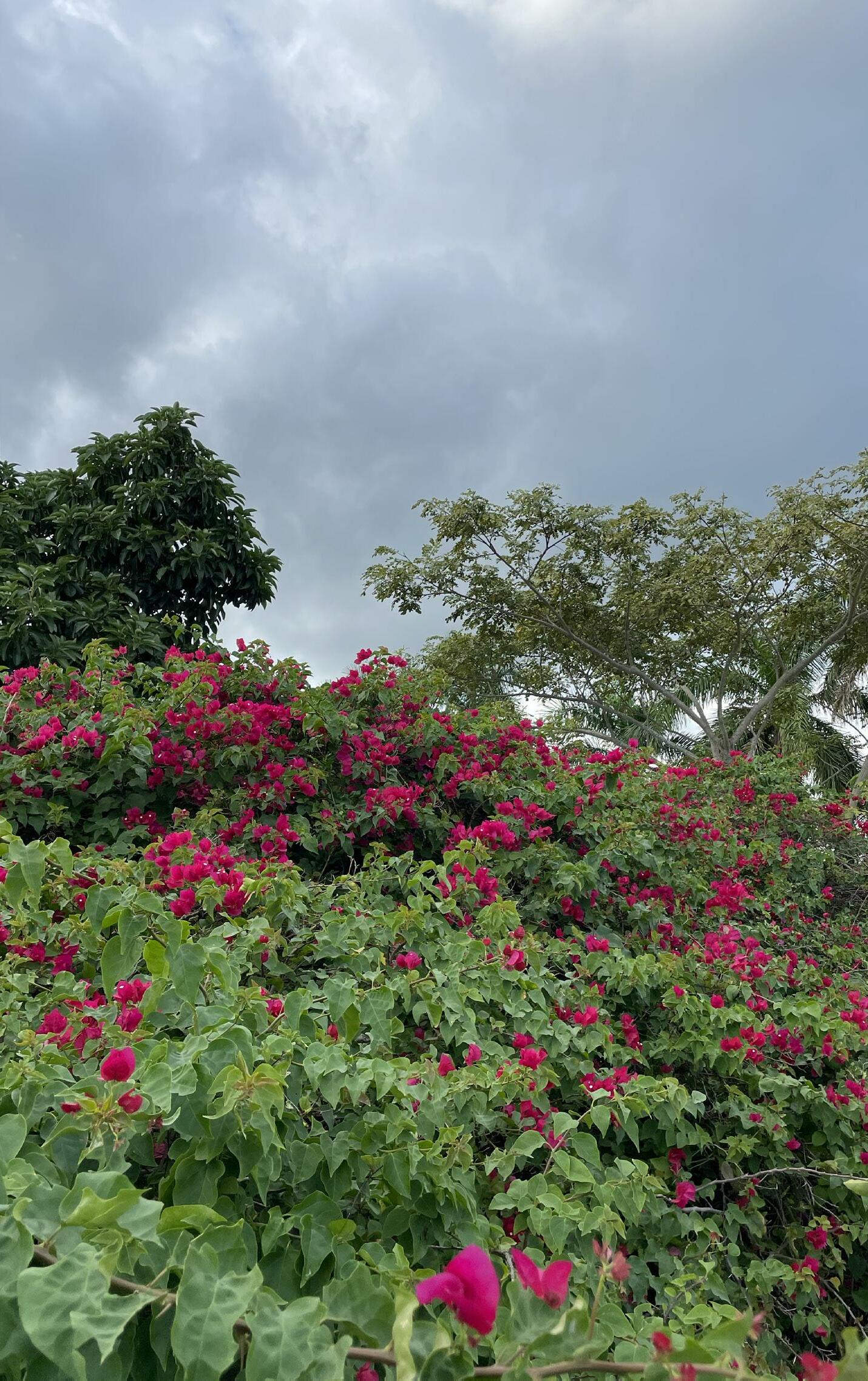 Ava Stuzin News Editor a.stuzin.thepanther@gmail.com DESIGN BY IVY LAGARTO PHOTOS BY RYAN MCKEAN
Ava Stuzin News Editor a.stuzin.thepanther@gmail.com DESIGN BY IVY LAGARTO PHOTOS BY RYAN MCKEAN
When one thinks of a Thanksgiving feast, turkey typically comes to mind. Many Thanksgiving dishes have served as staples of the holiday for years. But, for the vegan community, the overall holiday feast looks different in order to accommodate their diet. While turkey has become an emblem of Thanksgiving, some question whether it is worth killing 46 million turkeys and damaging the environment instead of finding eco-friendly alternatives that are just as palatable.
According to The Vegetarian Times, there are about one million vegans in the United States. With the rise of veganism, new foods and environmental concerns have surfaced.
“Going vegan does help whether it is Thanksgiving or another time. When people give up meat at least one day a week, it has a really positive impact on lowering our ecological footprints and lowering our greenhouse gas emissions,” Miami Palmetto Senior High AP Environmental Science teacher Pamela Shlachtman said.
Activist groups such as the Miami Youth Climate Summit have taken initiatives to promote a plant-based Thanksgiving helping the environment. The summit announced
an activity where participants submitted photos of their vegan alternative ideas to Thanksgiving dishes. Often, vegans struggle to find suitable holiday options resembling their animal-based counterparts, so this challenge opened up new creative options.
“There are a lot of people who might be considering veganism, and around the holidays, there are options for that,” MPSH sophomore and MYCS Vice President Sofia Arnau said. “And so [the vegan Thanksgiving challenge] is just to promote like, hey, maybe you want to try out a new dish, and it does not have to be meat based, it can be plant based, vegetarian, and just to create new opportunities and expand ideas.”
Many options are available for vegans to enjoy during the holidays. Whole Foods offers an entirely vegan catering menu, including a Mushroom Roast to act as the “turkey”, among other dishes. Additionally, Planta, a plant-based restaurant, offers “Plantsgiving,” an eight-dish vegan traditional Thanksgiving catering menu for $179.
Concerns about environmental impacts have further encouraged vegan diets. According to research by Carnegie Mellon University, a 16-pound turkey produces 32.4 pounds of carbon dioxide, which equates to the amount created by gravy, cranberry sauce, brussels sprouts, mashed potatoes, rolls and apple pie altogether. Overall, just
one animal based Thanksgiving meal feeding 12 people totals 103 pounds of CO2.
“Part of what people eat are factory raised animals raised in concentrated animal feeding operations. There’s a lot of waste from the animals, and that can contribute to run off and surface waters which contributes to potentially hazardous algae blooms,” Shlachtman said. “So, with a lot of manure and stuff decomposes, you get nitrous oxide and greenhouse gas. So concentrated animal feeding operations do what we suppose is a big problem.”
The environmental concern and animal treatment is a principal component in the switch to a more eco-friendly diet.


“During the holidays especially, there [are] a lot of carbon emissions because of the increased use of poultry, and so meatless Mondays, especially around the holidays, reduces carbon emissions and methane emissions in the U.S. and around the world, and [veganism] is just a healthy initiative that overall reduces pollution, care or animal cruelty,” Arnau said.
Whether year-round or on special occasions, vegan diets provide health benefits and add a sense of consideration for the wellbeing of our planet.
The day following Thanksgiving, a holiday that involves family, friends, and mini food comas also includes the race to the mall to indulge in Black Friday deals. Although the day consists of deals and steals in the shopping realm, it is not as happy as it may appear. Waking up early after a night full of food and family creates a sense of anxiety and dread. Only one word can describe the sound of hearing an alarm clock alerting one to shop till they drop: pain.
After arriving at the mall, the horror of waking up early quickly fades into hoorays once immersing oneself in the many sales. Upon seeing one’s favorite store offering 40% off deals on the shoes one has been eyeing, or the free gift accompanied with a purchase, the early morning wake-up and long lines feel worth it.
Black Friday continues to be shoppers’ best friend and worst nightmare. The temporary pain of waking up in the crack of dawn does not compare to the hoorays from the shopping that makes one’s day a whole lot better. Countless receipts, deal’s and blistered feet later, one feels tired but content with the day.
Maddie Volpe Multimedia Video Editor m.volpe.thepanther@gmail.com Sofia Strohmeier| Copy Editor
Sofia Strohmeier| Copy Editor
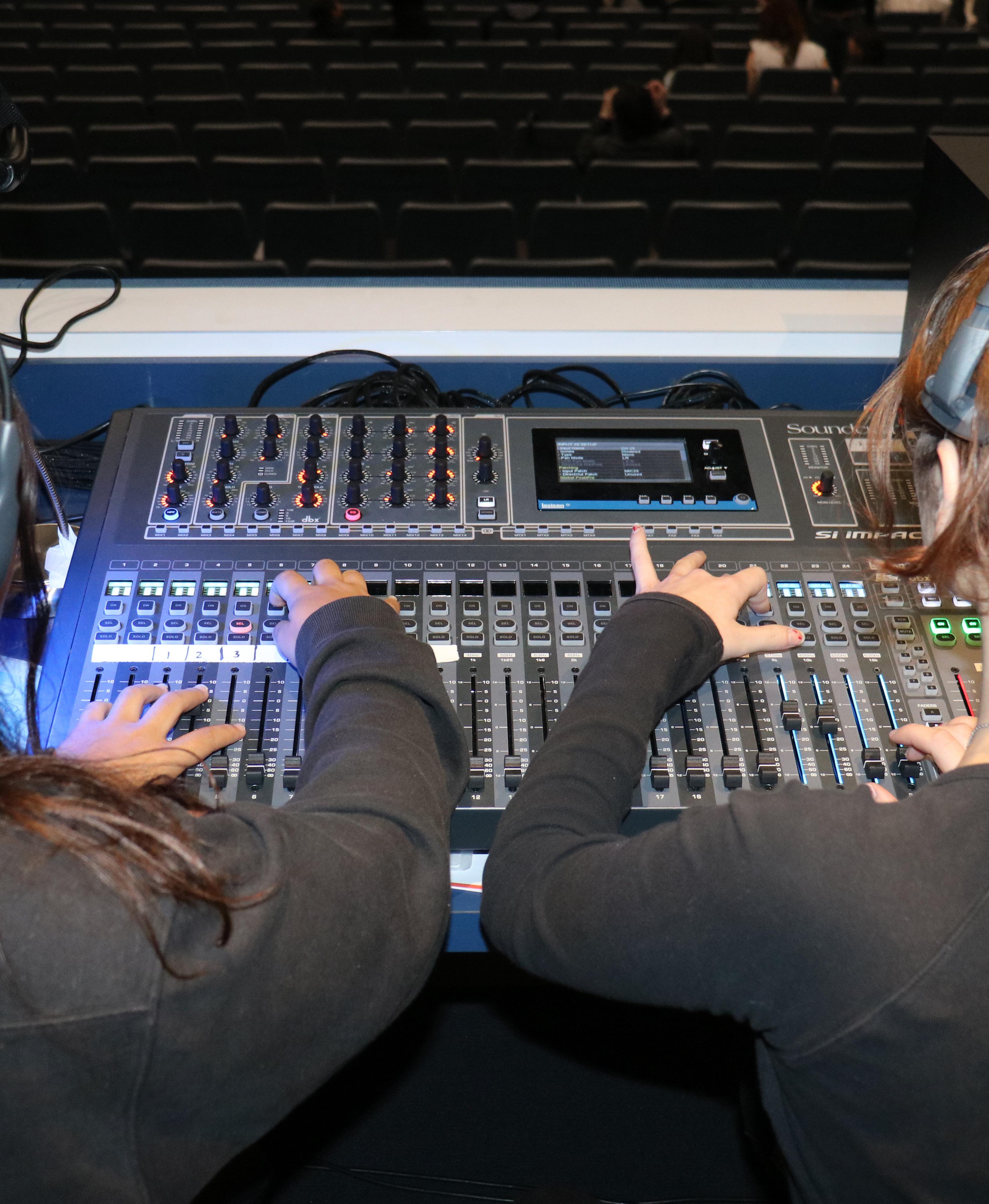
Troupe 1298 highlights the artistic and musical brilliance of the students at Miami Palmetto Senior High School through their unique theatrical pieces — one of many performing arts opportunities at the school. Anyone in any of MPSH’s productions gives one hundred percent effort to ensure that each and every performance is breathtaking. The cast and crew abilities are highlighted by those on stage, to those behind the scenes.
For everything to go well on stage, both onstage actors and the behind the scenes crew must work in unison to make the performance possible. The crew goes through rehearsals, often extending after school hours, and equipment checks leading up to opening night to ensure the performance is of their best ability. All this hard work culminates in their spring production, which they begin preparing for multiple months in advance.
MPSH drama students work on getting costumes, makeup and props ready for their respective characters in order to entice the audience into what they are producing. Then comes dress rehearsals — a full run through of the entire production. They use their props and costumes to ensure everything works well with the piece, and those working backstage (tech and crew), also use this time to gather their cues to ensure the cast’s success — as true problem solvers, the cast and crew act as the backbone of the drama department.
“People do not realize how much credit they actually need to give to the people working backstage because they really make the magic happen,” MPSH senior and Thespian President Ella Karakadze said. “They get everything organized and everything put together and if something is wrong with us, whether it is a costume or a prop [that] is not set up on stage, they work to bring it back [and] they work to fix the problem.”
Freshman Nadiv Shapiro is in StageCraft and has had the opportunity to translate the skills he has learned in drama to other disciplines. He joined the school’s program due to his newfound love for working backstage in middle school.


“[This year] I am not doing competition. The people who do competition are usually in their competition group working on it the whole class,” Shapiro said. “Since I am a freshman, I am just learning all the stuff like costume design and stage design before I can get into the things I actually want to get to do like lighting and sound.”
Shapiro looks forward to the next three years, where he can have the opportunity to work on more advanced projects.
“Going forward, I want to learn what really goes into making a big production,” Shapiro said.

While working onstage and backstage are both equally important roles, the experience from each job is different as a whole. The onstage cast is visible by the audience, while the backstage crew makes sure that the cast is able to put on the best performance they can.
“You get to learn things that you would not really learn if you were an actor on stage and you start to see how everything just starts to come together. First you start working on one piece and then another piece and once you start putting it together you start seeing the story you are trying to tell and it is just a very surreal experience,” MPSH sophomore and member of Troupe 1298 Michael Alvarez said.


Aside from their annual musical, the drama department also participates in district and state-wide competitions. On Nov. 19, the troupe attended a district level competition, participating in genres like large group musical, duet acting, technical theater, pantomime and more. These competitions allow the troupe to improve their skills by receiving feedback from the competition’s judges. At Districts, pieces are scored by around three judges and are overall given the scores of Poor, Fair, Good, Excellent, Superior and Top Honors. During this year’s district level competition the troupe received 11 overall scores of Excellent and 23 overall scores of Superior, three of which were also recognized with Top Honors or the highest score in the category. One out of the three pieces from Top Honors received a perfect score which means they received a 30 from each judge.
“I believe that we learn and we grow when someone is caring about us, but also cares enough to push us to be better. I do not think that you are going to grow as much if somebody just tells you everything [is] perfect. So, I joke with the students that that is for your grandmother or abuela to tell you you are ready for Broadway, that is not my job. My job is to help you find your successes [and] find your comfort level, but also push you to the next level constantly,” Drama Department teacher Robin Barson said.
For looking to dive deeper into their interest in theater, competitions serve as an opportunity to do so. Ms. Barson allows various students from all of her classes to have the opportunity to participate in competitions. Students from Acting 1 class and stagecraft class participate in competitions to enhance their skills.
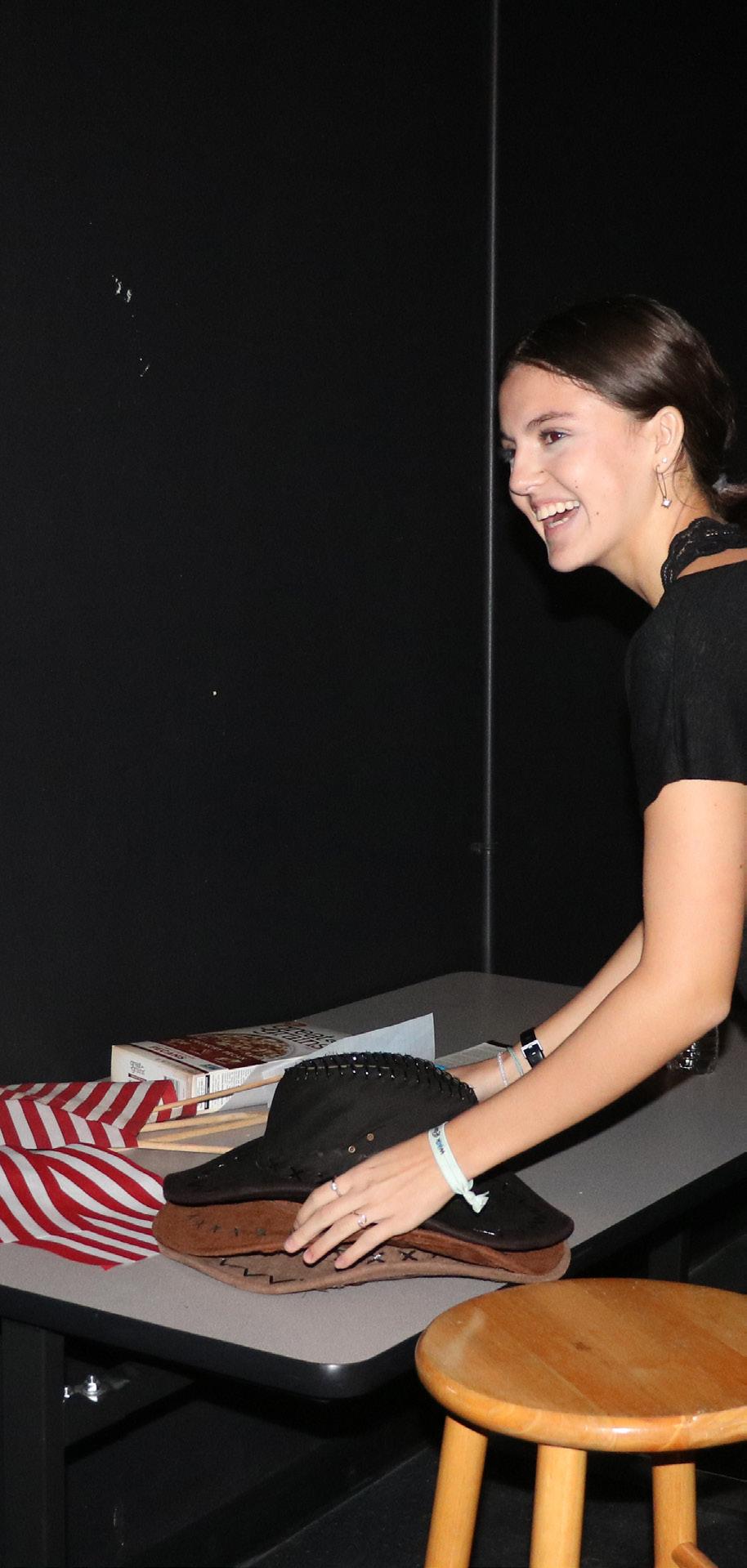
“There are schools that will only take their top ten or twelve students [to competition] because it is easier,” Barson said. ”I allow 49 students to go, but that means they are all working on a lot of different fields all at the same time.”
Involving oneself in the drama department allows for growth in not only their performance, but in themselves as well. Throughout a student’s time, they learn to get out of their comfort zone, like taking an unexpected role in a scene or going an octave higher in a song. The true growth begins when students allow themselves to let go and focus solely on their piece.
To handle the pressure of competitions, Karakadze aims to focus on the overall journey, not just the time leading up to it.
“I keep reminding myself that no matter the score that I get for competition, it is just about the learning process,” Karakadze said. “Being in theater teaches you how to work with other people regardless of your background. If you have a common goal and you’re working on something that will be what you continue to work on, it helps you work with a lot of people you might not be as close to.”
The Drama Department consists of many different individuals, each with their own interests, expertise and personality, but all come together to put on a spectacular show for their audience. The goal-oriented culture and teamwork help the department produce quality performances, never failing to put their all into each production.
Valentina Arias Multimedia Photo Editor v.arias.thepanther@gmail.com Perodin Staff Writer

d.perodin.thepanther@gmail.com
BY VALENTINA ARIAS DESIGN BY ELLA PEDROSO Daniel PHOTOS



Growing up, children tend to cycle through a plethora of different sports, trying to find their forte: basketball, baseball, swimming, dance, and tennis to name a few. Searching for the “perfect sport” can be successful, and people may stick with these sports for years, some choosing to take it beyond high school. Yet, the vast majority reach a point in their life when their love for the game fades.
An issue athletes, especially student athletes, commonly face is anxiety. Depending on the level one recreational, intermediate or professional — a sport can consume much of one’s life. Daily practices for hours on end can become a dreadful burden rather than an invigorating relief.

Differences of opinion or personal issues with a coach or mentor can also exacerbate this level of anxiety. Athletes may deal with emotionally abusive coaches who marginalize their players to push them to their limit, leading to resent and aggression.
Dealing with a careless coach comes with almost all sports, but one must remember that there are other, better coaches available. If a player wishes to quit as a result of a coach’s disrespect toward them, they should first attempt to resolve the situation before leaving the sport altogether.
Another issue young athletes face is constant pressure from parents and family to continue playing a sport. These athletes fear that quitting would let their family down. People-pleasing is an unhealthy habit and one should not continue playing a sport because of others.
“Pressure to perform and be successful is a reason a lot of athlete’s experience burnout or feel resentment towards the sport,” sports psychologist Hannah Tornatore said. “A good support system can make all the difference when an athlete is struggling with other factors that could lead to quitting.”
High-level sports are very time consuming and do not leave much time for athletes to engage in outside activities. Some
athletes wish to quit because they want to break out of their label and become something more. While it is saddening to quit after years of playing a sport, discovering another part of themselves is crucial.
“I stopped cheering this year because I knew my workload would take up my time and I wouldn’t prioritize cheer as much as the team required,” Palmetto junior Kaelyn Buck said. “I loved being on the team, but I just knew that it would be in mine and the team’s best interest to take
Some people simply fall out of love with their sport. Playing the same sport for many years can become tiring and often boring. No longer finding excitement in practices or being occupied with other things while playing may pose a sign that they should take a step back from their sport and
“I had a coach that made me hate lacrosse and I was considering quitting,” Tornatore said. “Then someone in my life began teaching me mental performance skills and I fell back in love with the sport. That’s also something that I witnessed a lot with other athletes, and I decided that I wanted to help people going through the same
Persistent involvement in a competitive environment can be draining for anyone. Even if one is acclaimed in their sport, chasing after the feeling of winning rather than enjoying the game itself is toxic. While there are ways to deal with some issues before quitting, there is no shame in deciding to stop playing if it brings more negativity than positivity into one’s life.
“Soccer was always difficult with the classes I was planning on taking, and with college applications on top of it I knew it would be too much,” Palmetto senior Cooper Menachem said. “If you really don’t enjoy it, it’s not going to harm you if you quit and no one is going to judge you.”
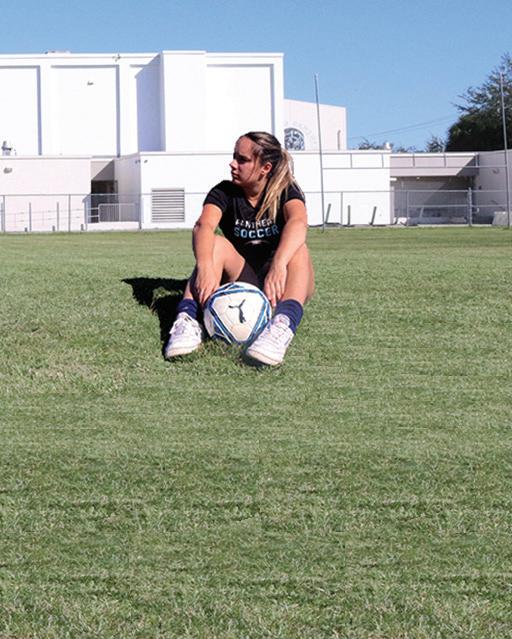 Jasmine Judge Business Manager j.judge.thepanther@gmail.com
Jasmine Judge Business Manager j.judge.thepanther@gmail.com
Skateboarding saw its entrance into the Olympics during the 2020 Tokyo Games, but viewers and skaters alike wonder if the entrance of skating in the Olympics creates a schism in the established culture of the sport and beloved activity.
“Skate culture, it is very unique, it is constantly changing, people [are] always trying to find new tricks, everyone is unique for sure. Each individual person has their own preferences in skating, with their tricks. It is also very open, it is very welcoming with learning something new. It is definitely looked down upon by a lot of people when it should not be, it is a community,” Miami Palmetto Senior High junior and skater Dakota Rosher said.
The culture and uniqueness of skating has become constant within the mainstream. From its strong influence on fashion, art, culture and music, the sport is gradually gaining acceptance by the general public. So much so that after its debut in 2020, it will return to the Paris Olympics in 2024.
“I think it finally gives [skaters] some representation and people are starting to realize it takes an incredible amount of skill to do. No matter what, I know that the people involved are going to be doing it still for fun,” Rosher said. “They are doing it out of their own enjoyment, not out of sponsorships, [or] out of the possibility of getting paid, they are just doing it for fun, and doing
it to better themselves. [They are] just constantly looking to better themselves.”
Skating’s mark on culture saw a sudden rise with its cult following in large cities such as New York and Los Angeles. Skateboarding roots back to Santa Monica in the 1950s, where surfboarders created a way to cruise while the tides were low. Now, 70 years later, skateboarding will see its second appearance in the Olympic Games in 2024.
“So in terms of culture today it is a lot more attractive to the mainstream, whereas before it was ‘no, that sport’s for hoodlums and street rats,’ [but] today it is an Olympic sport,” founder and CEO of Skatebird Miami, Jonathan “Joner” Strauss said.
Skateboarding has left a major impact on those who participate in the culture and who have developed a lifestyle and mentality circulated around skating.
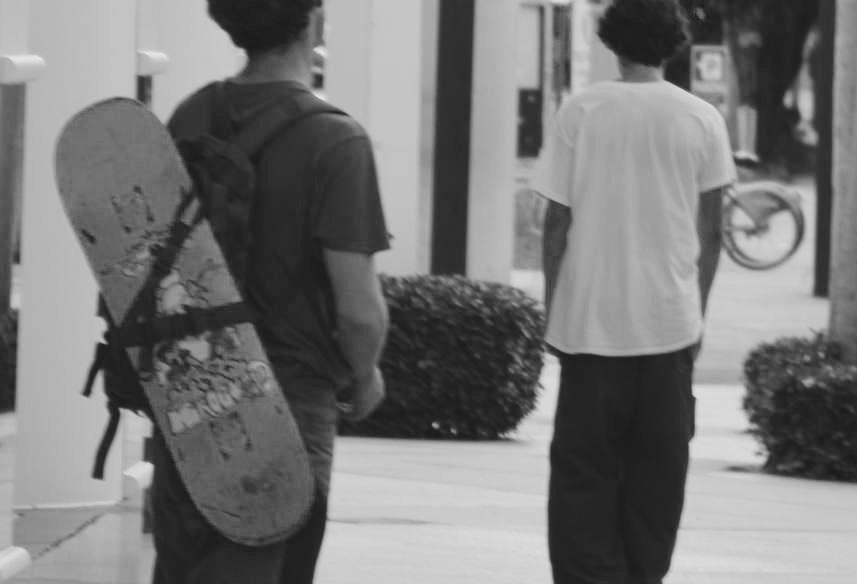
“Skate culture is the pioneer of culture. It is the trendsetter, it is what has affected from music to fashion to art to everything. You can argue that everything stems from activities that happen in skateboarding,” Strauss said.

The Olympic Games in 2024 will have four events in total: a Street Course and a Park Course, both for women and men. In the 2020 games, Japan dominated as they took home three of four gold medals, while Australia took home one. Australia’s Keegan Palmer took home the gold during the Men’s Park Event while Sakura Yosozumi, Yuto Horigome and Momiji Nishiya, took home the gold for Japan in the Women’s Park Event, Men’s Street Event and Women’s Street Event, respectively.
Skateboarders may now have a greater incentive to continue their passion after the inclusion of the sport into the Olympic Games.

“A lot of people, once they get cars, they might have been amazing skaters before, but it kind of dies out in their eyes, but that sort of passion should not die out and making it a sport is definitely going to help preserve that I guess, because it will make careers for people that really want to express that passion,” Rosher said.
The authenticity of skateboarding will preserve itself as the DNA of the sport resides in its iconoclastic and innovative spirit.
“It will not change the culture because the culture is very powerful. I mean the culture and the feeling, the absolute stoke that you get from skateboarding will never change,” Strauss said. “No matter how professional it gets or how competitive it gets.”
Through the impact of skateboarding, people have gained inspiration to contribute to the culture themselves.
“The passion outweighs any monetary contribution that you can get, so yes, I have turned it into a business [and] I am living off of it. But at the end of the day, the passion and the passion that it gives so many other kids is what keeps me driving along to keep building more parks and creating more spaces,” Strauss said.
The effects of the culture have also permeated through the youth since its beginning.
Julian Perez, MPSH Junior and owner of Clean Street Skate Company finds great value in skate culture and is optimistic about its future. He views the inclusion of skateboarding in the Olympic Games as a gateway to schools and the general public finding greater interest in the sport as a whole.
“I feel like [schools will] be more accepting towards skateboarders and it will lead to people getting scholarships because they are good at skateboarding,” Perez said. “There is a chance of them doing stuff in the Olympics. It makes it more serious and important.”
Michael Angee Life Editor m.angee.thepanther@gmail.com DESIGN BY ELLA PEDROSOA tale from the Haudenosaunee tribe
Native tribes, thought to resolve wars, heal wounds and strengthen the male populations as a whole – a sacred affair. Before games, players would partake in rituals, painting their faces and bodies and the stick racks. The main elements of what occurred in the practices before games remain private amongst the Iroquois tribes.
“They would tell the story before the games started to remind everybody where it came from because there is medicine to
Originally known as stickball, lacrosse games were given set dates by tribes after disputes to avoid or prepare for warfare. They could last several days, spanning across miles of terrain, and could include anywhere from 100-1000 men. Any man capable of walking was eligible
“...It was a substitute for actually going to war instead of creating bloodshed positions for land disputes, making sure nobody died while the ladies played a
Early games of stickball had few rules to guide players; there were no boundaries or tree-marked goalposts. Men were barefoot, only given wooden sticks with small baskets to pass around a deer hide-wrapped ball. This helped the players follow one of the most significant rules of the game: using one’s hands to touch the ball was prohibited. The game would begin with a toss of the ball in the air, marking the moment the opposing players fought to gain possession of the ball.

By the 1600s, Europeans discov-
ered the sport in Quebec, Canada. French missionaries named the game “lacrosse” after the crosier, the cross carried by a bishop during religious ceremonies. The French were very impressed by the sport, the roughness and the skill of the teams, driving French soldiers to place bets and bond over their favorite players.
Soon, French settlers embraced the sport as their own, and eventually evolved in Canada, where it developed into a national sport. In 1867, George Beers wrote the first rulebook, ensuring the safety of players. They were given the required equipment, the fields were shortened and the number of players per team was set to around 10. That same year, the first modern game of lacrosse was played in England with the majority of the group belonging to Iroquois tribes.
Despite settlers involving themselves in lacrosse, Native American tribes continue to have a strong connection to the sport and play it in a social manner.
“The way we play now is men versus women, and it used to be called little button,” Wareham said.
Lacrosse, or stickball, is a way for Native Americans to come together up to the eastern seaboard, no longer pertaining to fighting and now holding heavy for most as a way to embrace each other’s indigenous heritage.


 Mia Shields Design Editor m.shields.thepanther@gmail.com
PHOTO BY EMILIA HAUS
Mia Shields Design Editor m.shields.thepanther@gmail.com
PHOTO BY EMILIA HAUS
Texting is one of the main ways people around the world interact daily. With this comes neverending miscommunications due to “missing” a message. Read receipts are a shadow that follows its victim to their demise. When someone apologizes for “missing” a message, do they really expect to get away with this lie when there is hard proof acknowledging the actuality of the situation? Even without read receipts, it remains hard to believe that someone could not take a minute to send a simple response.
When someone “misses” a message, more likely than not they just did not feel like dealing with the situation at hand. Instead of responding with, “I cannot talk right now” or “Sorry, I am busy,” they decide to outright ignore the entire message. There is some underlying laziness behind this disregard towards others.
This is not a matter of putting others before yourself, it solely reflects the indecency of ignoring others’ emotions. It takes the same minor effort to ignore a message as it does to send a reply. No matter the situation, responding to a text should not be seen as such an extensive task, when in actuality, it usually takes under 30 seconds.
“Ghosting” is a common phrase used involving the issue of “missing” multiple messages. This phrase is commonly used when referring to someone who consistently ignores another person. Ultimately, they are trying to avoid their own problems, rather than dealing with them head-on. This illustrates which values one holds near their heart and reflects one’s inner character.
People have lives outside of their phones, but this does not take away from the fact that people behind the screen have feelings. Before ignoring a message, realize the lasting effects it may have. Before ignoring a message, consider how little effort it takes to acknowledge the text. Before ignoring a message, understand that nothing positive comes from being rude.
Ava Garcia Managing Editora.garcia.thepanther@gmail.com
In recent years, the term “ghosted” has surfaced in the digital world condemning a sudden loss of communication. However, is missing a text message as criminal as previously understood? While each situation and individual differs, missing a message in itself is not rude. What if the person you are ignoring is someone you have told multiple times not to contact you? It is justified to ignore them, and also might be plain unwise to get back in contact with them. What if some electronic salesperson is texting you seven times a week about that TV you “tested” while bored in BestBuy, and you do not have the heart to tell him you are not interested in buying? Are you obligated, by etiquette, to give him a response? Or can you pretend he does not exist until he disappears? Digital etiquette is a new frontier — a new, boring frontier filled with half-baked rules with no formal societal agreement.
Some may consider themselves etiquette “experts,” but there is no actual authority. Of course, etiquette is also based on social constructs, meaning even if “Miss and Mr. Perfect Manners” were to detail every single texting faux pas, any rule could change with societal shifts. This leaves individuals in the position of having to decide for themselves, on a case-by-case basis, whether ignoring a text is fair or foul.
So, here are ground rules to make it easier in the future. Messages from a close friend or family member generally should not be ignored. Example: “Hi honey, it is your mom. I love you!” Sure, it is not strictly necessary to respond, but one should really say “hi” back. If the text is begging for a response, then one should assume a reply is required.
I have received messages at inappropriate hours of the night either relating to schoolwork, silly questions or other unimportant ideas — and not just once, but multiple times. I wanted to scream. Instead, I simply did not reply. This was not the first time I had ignored a digital summons, and certainly not the last. I did not intend to seem disrespectful or malicious — but, I knew what I wanted my silence to communicate: “This is not a priority for me right now. You are not my priority.” Sure, a response would have been easy to do, but it was midnight and I was watching “Gilmore Girls.”
Amy-Grace Shapiro Online Co-Editor-In-Chief
a.shapiro.thepanther@gmail.com

Picture this: you are standing in a line among 100 strangers your age, all in a race to a finish line. However, you are only allowed to move forward if what one person calls out applies to you: “Take a step forward if…” Consider the people who reached the finish line first, under categories like “have never had to worry about where dinner is coming from,” “have lived in the same home your whole lives” and “have never been made fun of for your looks, race or ethnicity,” giving them an upper hand. Now, consider those people who took only one or two steps forward for the “have always kept straight As” or “first person in your family to graduate high school” categories. Do they look the same as those who made it to the finish line first?
Chances are, the highly-qualified minorities who could not take steps forward for questions applying to those leading privileged lives are equally capable of attending top-ranking colleges and universities. Their racial and ethnic backgrounds set them apart significantly, oftentimes through histories of oppression and discriminatory obstacles they encounter daily. When applying to colleges, it is imperative that one’s race be considered in order to give marginalized people a fair chance to gain admission to institutions that may have overlooked them otherwise.
According to the Center for American Progress, affirmativeaction bans can reduce students of colors’ chances of admission to top-ranking public institutions by 23%, and racial minorities still remain underrepresented on college campuses. As the conservativemajority U.S. Supreme Court considers a nation-wide ban on affirmative action in a case between Harvard University and University of North Carolina at Chapel Hill, admission of minorities to top-institutions face a significant risk, potentially setting the nation back nearly 60 years to the introduction of affirmative action in 1965.
:In the Oct. 31 Supreme Court hearing for Harvard v. UNC Chapel Hill, Justice Ketanji Brown-Jackson’s argument presented a hypothetical in favor of affirmative action, comparing two applicants of UNC Chapel Hill with starkly different family histories. One applicant describes their family having lived in North Carolina for generations, since before the Civil War, with five previous generations attending the university. The applicant hopes to attend UNC Chapel Hill as a testimony to their family legacy and background. Similarly, the second applicant also says their family has lived in North Carolina for generations, since before the Civil War. However, the second applicant’s family had lived in North Carolina as slaves, barred from attending the institution due to their race — setting them significantly apart from the first applicant. The second applicant, now having the opportunity to attend UNC Chapel Hill, sees it as important that they do so.
Without a race-conscious admissions process, schools like UNC Chapel Hill — among many others — would not have a way of differentiating an applicant based on their family’s history and access to the resources necessary for maintaining the required academic standard.
Sara Paredes Feature Editor s.paredes.thepanther@gmail.com DESIGN BY PAULA ORTIZNothing clears my mind more than having my AirPods in at the gym and blasting my favorite songs while the surrounding sound of weights dropping echoes around me. The gym is my safe space; it is where I go to clear my head and simply focus on myself, and it is the one place where everything I do is about me and only me.

It is comfort-
ing to have an activity that im- proves my physical state and keeps me active. I feel at ease when my sole focus is making the weights move and not my homework or any school related chores. The actual gym is great, it has all the equipment needed for improve- ment, except for one thing; it has mirrors all over the place. Mirrors are both my biggest enemy and my biggest hero. In general, looking at myself in the mirror after a
workout can feel rewarding. I have the post-workout adrenaline pump, I am in my gym clothes and it is especially great when I feel proud of the workout. On the other hand, if I had a tough day and my workout felt useless, looking in the mirror feels like I am seeing someone I am not. Not only am I seeing someone else, I am seeing the last person I want to see: me with zero progress. It is me looking like I have not been to the gym in months and it is not the person I enjoy seeing after a workout.
Going to the gym almost daily means there must be progress, but most of the time, I do not see it. Not noticing any results when putting so much effort into something is discouraging and it makes me not want to keep working on myself. There are days where I do not feel like going to the gym because I think ‘what is the point if I am not seeing any change’?
Times like these lead me to question whether I should continue my gym journey. It can get difficult to stay motivated when it feels like everything I am doing is leading to nothing. Mirrors are not my only problem, I also compare myself to others. I generally workout alone, but sometimes I train with my brother and my friends over the weekends. But it is not just me at the gym. There are numerous people who are much stronger and toned than I am, and even though these people are in their twenties and have worked out way longer than I have, the comparison is evident.
When I initially started at the gym, I never expected to deal with the side issues attached to it. Luckily, I know I am not alone in this. I have friends who go to the gym with me that deal with the same struggles I do and a whole community to help me with anything I need. Having shared experiences with others helps us overcome our challenges. Our community is aware of the mental challenges we face and we lift each other up when needed.
It is okay to struggle in a place you thought you would thrive in. Just because there are some obstacles in your way does not mean you should stop trying and it certainly does not mean you are not doing a good job. Dealing with issues is normal, and everyone goes through it. There are people who are dealing with the same struggles you are and it helps to speak with them about it if comfort- able. It is usually the little things that help the most. Next time your gym friend posts a gym picture or if you know they just got back from a workout, let them know they look good or to keep up the good work. These supportive comments really go a long way.
Paula Ortiz Design Editor p.ortiz.thepanther@gmail.com DESIGN BY PAULA ORTIZ PHOTO COURTESY OF PAULA ORTIZAmy-Grace Shapiro
In this increasingly digital age, cell phones have become the primary source for news. Yet, something about holding and reading a physical newspaper translates narratives in a way a cell phone cannot; which encourages us to continue printing our issues.With Thanksgiving past us, we recognize the things we are thankful for and nothing comes to mind faster than our readers and supporters. We thank you for trusting The Panther to deliver news about the community and surrounding world. To our school, Miami Palmetto Senior High, and administration, thank you for supporting our student-run publication. To our fellow students and teachers, thank you for sharing your stories with us and allowing us to report your experiences to inspire others. To our donors and advertisers, thank you for your generosity that allows us to print over 1,200 issues every month. To our sponsor, Ms. Aviles, thank you for overseeing our class, uplifting our staffers and supporting this paper — we could not do it without you. And above all, we thank you, our reader. Without loyal supporters like you, this paper would not be successful. We are beyond thankful for you.
With thanks,

The Panther staff aims to inform fellow students and parents about school-wide, local, national, and international news. The Panther’s content aims to represent the student body. Editorials feature the opinions of staffers. Features of other students, teachers and clubs further promote the spirit, culture and personality of Miami Palmetto Senior High School.
The Panther is a monthly publication of Miami Palmetto Senior High located at 7431 SW 120th Street Miami, FL 33156, (305) 235-1360 ext. 1124. The views expressed are solely those of The Panther staff. Students who wish to respond to an article in this publication or discuss another issue may write letters to the editor and submit them to room 1237 or e-mail us at s.elkins. thepanther@gmail.com and/or a.shapiro.thepanther@gmail.comThe Panther has professional membership in NSPA and CSPA. The Panther prints 1,400 copies per issue for distribution. The Panther is distributed for free to all students in school. Please visit our paper online at thepalmettopanther.com.
All creative work (such as illustrations, graphics, photos and writing) excluding staff editorials and staff member pictures will include byline credits.
Any errors in print will be acknowledged in the next print issue in a correction box. Any errors online will be acknowledged immediately. Errors include facts, figures, misquoting and name misspellings.
Ads will be designed by the advertiser and include all information the advertiser wants included. If the advertiser asks the staff to design the ad, the individual who sold the ad will design the ad or the Ads Manager will. Ads will be approved by EICs, the Advisor and the Ads Manager. If an ad produced is illegible, contains false information, or the advertiser does not like it, they will receive a free ad in the next issue. If you would like to advertise, please contact us.
The School Board shall comply with all Federal Laws and regulations prohibiting discrimination and all requirements and regulations of the U.S. Department of Education. The Board will enforce its prohibition against discrimination/harassment based on sex, race, color, ethnic, or national origin, religion, marital status, disability, age, political beliefs, sexual orientation, gender, gender identification, social and family background, linguistic preference, pregnancy and any other basis prohibited by law. The Board shall maintain an educational and work environment free from all forms of discrimination/harassment, which includes Title IX of the Education Amendments of 1972. Title IX prohibits sexual harassment and other sexual misconduct such as unwelcome touching, graphic verbal comments, sexual jokes, slurs, gestures or pictures. All students, administrators, teachers, staff, and all other school personnel share responsibility for avoiding, discouraging, and reporting any form of prohibited discrimination or harassment against students by employees, other students and their parents or guardians, or third parties. This policy prohibits discrimination and harassment at all School District operations, programs, and activities on school property, or at another location if it
